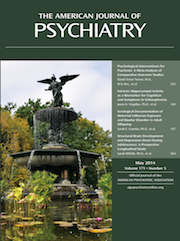The Pocket Guide to the DSM-5 Diagnostic Exam
While DSM-5 is not drastically different from its predecessor, DSM-IV-TR, there are a few important changes of which clinicians and researchers must be aware. Notable changes include the loss of subtype classifications for variant forms of schizophrenia, deletion of the bereavement exclusion for depressive disorders, and elimination of Asperger’s syndrome as a distinct classification. Additionally, the most important advances, according to the architects of DSM-5, are the elimination of the multiaxial system and introduction of “dimensions” used to measure psychiatric symptoms.
As with any large “bolus” of information, time and energy are required to digest it. The Pocket Guide to the DSM-5 Diagnostic Exam, by Abraham Nussbaum, M.D., is intended to assist with this process, serving as a pragmatic companion to DSM-5 in diagnostic interviews. The book mirrors the structure of DSM-5 and is divided into three sections. The first section introduces the diagnostic interview, discussing how DSM-5 alters this information gathering process. The second examines how to put DSM-5 diagnostic criteria to use in clinical practice. Finally, the third equips the reader with diagnostic tools, including useful assessment measures. The clear purpose of this book is to help the reader accurately diagnose a person with a mental disorder under the guidance of DSM-5 while establishing and maintaining a strong therapeutic alliance.
The text-rich book was written for both the novice and the seasoned interviewer. Nussbaum writes clearly and succinctly, with special emphasis on presenting rather complicated concepts in an organized step-by-step manner. Beginning each chapter with a vibrant introduction, he emphasizes the importance of the chapter’s content, giving the reader perspective surrounding the utility of the material. The body of each chapter includes helpful headings to anchor the discussion, followed by high-yield conclusions summarizing pearls of the chapter.
The most refreshing aspect of this book includes the colloquial writing style of the author, who ironically disarms the reader while explaining how to disarm patients. The first three chapters in section 1 review the psychiatric diagnostic interview in detail, from the importance of body language to specific questions to ask during the 30-minute interview. While a bit rudimentary for the seasoned practitioner, the section gains momentum by discussing critical changes to DSM, including the introduction of the dimensional analysis of psychiatric symptoms. Through the use of four common case presentations—for major depressive disorder, schizophrenia, alcohol use disorder, and narcissistic personality disorder—the author illustrates the utility of removing confusing subtypes and qualifiers, which is a reflection of the changes exhibited in DSM-5. In one compelling vignette about major depressive disorder, Nussbaum discusses a patient named “Ruth” who struggles with the recent death of her husband of 30 years. He explains that “she has been hearing the voice of her deceased husband telling her that he misses her,” illustrating the depth of loss this patient feels. In taking the reader on this journey, he demonstrates how this patient meets criteria for major depressive disorder according to DSM-5, since the bereavement exclusion has been removed. Furthermore, he demonstrates how the specifiers are different for her diagnosis in DSM-5 because she can have psychotic features (hearing her husband speak to her), but they are now classified as moderate, not automatically severe, considering her ability to maintain work and care for her family.
Section 2 operationalizes DSM-5 diagnostic criteria, providing the meat of the book. The author follows the order of DSM-5, thus beginning the section with neurodevelopmental disorders. He provides screening questions and inclusion and exclusion criteria, as well as alternatives (related diagnoses from the same DSM-5 chapter) for the most common disorders included in DSM-5, bypassing many topics for the sake of brevity. This section is certainly no substitute for DSM-5, although it is an effective “CliffsNotes” version equipped with DSM-5 page references when appropriate. A helpful feature for those interested in child and adolescent psychiatry are the highlighted sections specific to children, which facilitate quick referencing for the busy clinician.
Any of the DSM editions may be challenging to navigate, as they provide a sea of words from which skilled clinicians are tasked to pluck the precise patient descriptor. Perhaps the most difficult part of this process involves translating the subjective reports of our patients into objective diagnostic criteria. Next to each inclusion criterion, the author provides examples of skilled, insightful questions to ask patients, helping to streamline the information-gathering process. While this may be elementary to some, it can help the early-career psychiatrist lay a solid interviewing foundation while refining the skills of those more seasoned. Finally, section 3 offers an abundance of diagnostic tools, including a stepwise approach to differential diagnosis, a detailed look into the mental status examination, and assessment measures most helpful for the diagnostic interview. This final section offers a “potpourri” of resources for the reader, intended to bolster interviewing skills at all levels of experience.
The Pocket Guide to the DSM-5 Diagnostic Exam has earned its place on our desks. While this book may be more instructionally helpful to the novice interviewer, it gives clinicians and researchers of all levels a glimpse into the changes from DSM-IV-TR to DSM-5, with the goal of bridging the gap between words on a page and speaking to patients. Armed with wisdom and compassion stemming from years of practice, Dr. Nussbaum has written an entertaining and informative book that makes for a worthwhile read.



